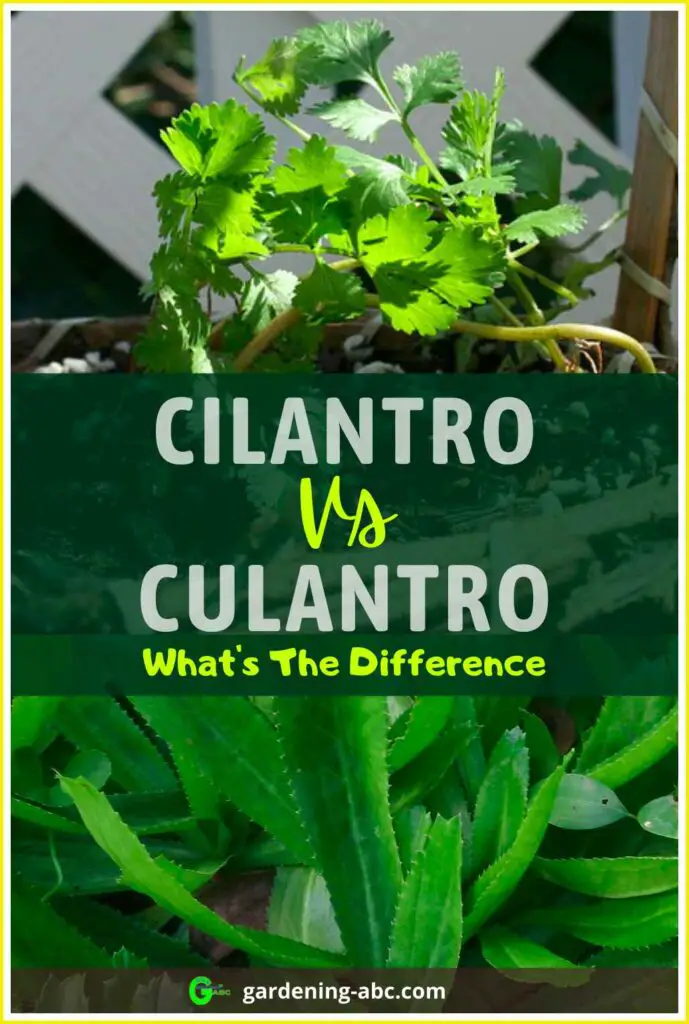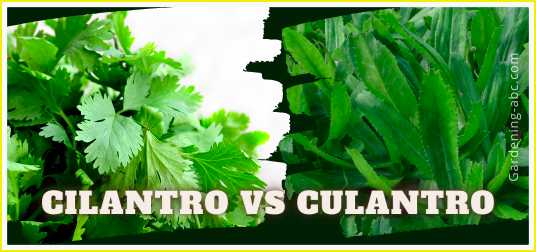We use affiliate links to run our site. When you buy through links on our site, we may earn an affiliate commission, without any added cost to you. Learn more
While most people know cilantro as the aromatic herb that gives Mexican and Asian dishes their characteristic flavor, there is another variety of cilantro that is also popular in Latin America and the Caribbean. This lesser-known herb is known as culantro.
Culantro and cilantro are both members of the family Apiaceae, which also includes dill, parsley, fennel, coriander, and caraway.
Culantro is native to South America and the Caribbean, while cilantro is popular across Asia and Europe as well as Central America. Both herbs are used in cooking for their distinctively spicy flavor.
In this post, you’ll learn more about the differences between these two herbs that will help you tell them apart.
While both have the same range of uses, it’s good to know the basic differences between culantro and cilantro. So you know exactly what to use in a particular recipe.
Read on, this will be very interesting.
what is culantro:
Culantro is a perennial herb that is also known as recao, saw-tooth coriander, spiny cilantro, or West Indian coriander.
Culantro has a strong flavor that resembles cilantro but has a hint of citrus that sets it apart from its more popular cousin. The leaves are also somewhat thicker than cilantro leaves, which makes them easier to cut into chiffonade (thin strips).
Culantro is often used in Caribbean cuisine as a replacement for cilantro and is important an ingredient in Latin American cuisine.
Culantro is generally more difficult to find than cilantro because it isn’t grown commercially in the United States or Europe. If you do come across it at your local market, look for a bunch with deep green leaves that have no signs of wilting or yellowing on the edges.
What Is Cilantro?
Cilantro is an annual herb with smaller, thin stems and delicate leaves that look like parsley or dill. It’s also known as Chinese parsley or coriander leaf.
Cilantro has a citrusy aroma and flavor that’s more subdued than its cousin culantro.
What are the basic differences between culantro and Cilantro:
Culantro and cilantro are two different herbs. They are both green, and leafy. They both have a similar aroma and taste, but they also have some notable differences.
Name:
Being two different plants, they have different botanical names.
Although both cilantro and culantro are from the same botanical family, Apiaceae, they belong to a different genus. and bear different botanical names.
The botanical name of culantro is Eryngium foetidum whereas the cilantro or coriander is known as Coriandrum sativum.
Appearnace:
Although they sound almost the same to the ears look wise cilantro and culantro are quite different.
They both have a green-leafy appearance, but culantro has lettuce-like leaves that are darker green and have serrated edges.
Culantro leaves are larger and wider than cilantro leaves. and are also pointed at the end of each leaflet, while cilantro’s leaves are blunt-tipped.
The stem is also thicker compared to cilantro.
Smell and Taste:
Culantro also has a stronger taste than cilantro; it tastes like anise with hints of mint and ginger mixed together into one flavor profile.
The stronger aroma makes it easier to identify when cooking with it or eating it raw on its own!
Nutrients:
Cilantro is rich in vitamins C, provitamin A, and K, along with potassium and manganese, calcium, and dietary fiber.
Cilantro tends to reduce anxiety, improves sleep due to its soothing properties, and reduces heart diseases.
Culantro has a high level of calcium, iron, and phosphorous. The leaves contain essential oils that stimulate digestion and relieve flatulence and constipation.
conclusion:
No matter how you prefer your food to taste, both cilantro and culantro have their place in the culinary world. It’s important to ensure that you know the difference between the two plants so that you use the right one in your recipes.
Culantro may be more popular in Central America and Southeast Asia, but cilantro is still a staple in the kitchens of many other cultures.
And beyond food, knowing the difference between these plants can assist you in making smart tree choices if you decide to plant them in your own garden.
I hope this post helped your resolve your doubt about the two herbs. If you want to know more about growing cilantro This post will help you.
If you like the information, share it with others, and Don’t Forget to PIN IT.

Amazon and the Amazon logo are trademarks of Amazon.com, Inc, or its affiliates.

Hi there! My name is Prasenjit and I’m an avid gardener and someone who has grown a passion for growing plants. From my hands-on experience, I have learned what works and what doesn’t. Here I share everything I have learned.
